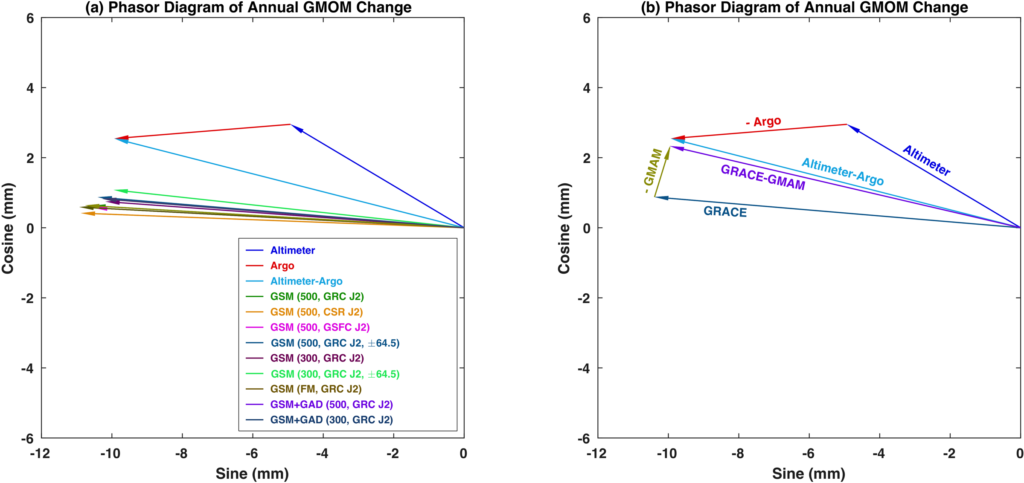Dr. Jianli Chen and a group of scientists at the Center for Space Research are the authors of a new study just published in the Geophysical Research Letters (https://agupubs.onlinelibrary.wiley.com/doi/full/10.1029/2019GL085519). GRACE satellite gravimetry provides a revolutionary means for monitoring and measuring global mass redistribution and movement with unprecedented accuracy. The Integration of GRACE satellite gravity measurements, sea surface height changes from satellite altimeter, and ocean temperature and salinity observations from the Argo floats network has brought a new era to the studies of global ocean mass change (and sea level change). GRACE observed global mean ocean mass changes generally agree well with independent estimates from satellite altimeter and Argo (i.e., Altimeter-Argo). However, there appears a systematic annual phase lag (~10 degrees) between the GRACE and Altimeter-Argo estimates. The authors have found out that this annual phase lag is caused by the enforced global mass conservation in GRACE gravity solutions, in which the DC00 spherical harmonic coefficients, representing changes in total Earth mass are set to zero (GRACE gravity solutions represent the total gravity change with atmospheric and oceanic contributions removed, so the total mass in the GRACE solutions is not constant). After a correct implementation of global mass conservation by removing global mean atmospheric mass from the GRACE solutions using atmospheric model predictions, the annual phase lag is nearly completely gone, yielding significantly improved agreement between GRACE and Altimeter-Argo estimates.

